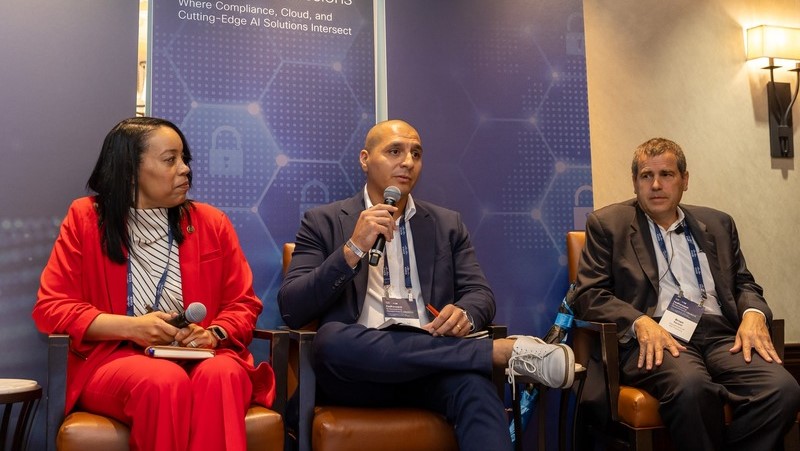
As federal agencies prepare to increase their use of artificial intelligence, senior government technology leaders shared on Tuesday that they are taking a measured approach to AI adoption, prioritizing security and data before rolling out new capabilities.
At the Sept. 16 FedForward event in Washington held by Cisco and MeriTalk, federal officials emphasized that building guardrails and policies is central to their AI strategies.
“For the Department of Justice, just full transparency, we’re not where I would like us to be with AI, and that’s intentional,” said Shantrell “Nikki” Collier, the deputy chief information officer (CIO) for the Department of Justice (DOJ).
“My concern, especially in law enforcement, is that the data that we are managing day to day and accessing is the public’s data,” Collier said. “So, we want to put some thought behind how we protect the public, how we protect the public’s privacy.”
Collier said she is “network agnostic,” explaining that DOJ attorneys may be “popping into the coffee shop” to work, or that agents are constantly traveling and connecting to airport Wi-Fi.
“So, we really have to make sure that whatever we’re putting in place – those guardrails, those policies – can be applicable whether they’re on a virtual private network, or whether they’re on Wi-Fi, or whether they’re wired in the office,” Collier said. “We have to be able to protect the work that we do and the data.”
“With AI, I want to take those very aggressive steps, and I think the telemetry is there,” she said, adding, “But I do want to make sure we put those guardrails and those policies in place to be able to protect the data when we start to leverage [AI].”
Similarly, Brian Peretti, the chief technology officer (CTO) at the Department of the Treasury, stressed that “AI runs on data.” Peretti is going to be stepping down shortly as CTO, having opted to take the federal government’s early retirement option.
Peretti, who has served at the Treasury Department for over 22 years, said that organizations need to break down data silos and take the necessary steps to prepare for AI.
“You’re going to have to actually think more and more and reconsider what’s going on in a way which is more about the organization and how you’re trying to drive to what you’re trying to achieve,” Peretti said.
For example, he said, “How do you understand what is needed today based upon the environment we’re going into as AI gets deployed more, as more data needs to get done, to be able to be able to make it a better system in terms of your organization? How do you think through that? Because you also have to have that strong governance policy … and have you thought about that?”
Mauricio Lozano, an enterprise defense cyber architect and RMF technical area expert at the Naval Sea Systems Command, added that agencies will only see the benefits of AI once they consider their data.
“When you can involve data, and you can involve machine learning and AI on that data, you can see things that are unseeable in any other format,” Lozano said, noting that agencies can essentially “predict the future.”
He said this can be especially helpful from a cybersecurity standpoint because security analysts can “anticipate threats” with the help of AI.
“If we have AI and machine learning doing this for us, it frees up our analysts to be proactive,” he said. “You can proactively address things … and that only happens if you embrace the data.”
In a separate session at the FedForward event, Allen Hill, the CIO for the Federal Communications Commission echoed a similar sentiment.
“Artificial intelligence automation will enable the proactive defense [allowing us to] spot anomalies before they become incidents,” Hill said.
Looking forward, Hill said networks themselves will be able to evolve into “self-healing, self-optimization,” adjusting to mission priorities in real-time.
“The future is not just the network that defends, it’s a network that learns and adapts to prioritize the mission. That’s where we’re heading,” he said. “That’s the vision agencies should be taking across government.”
